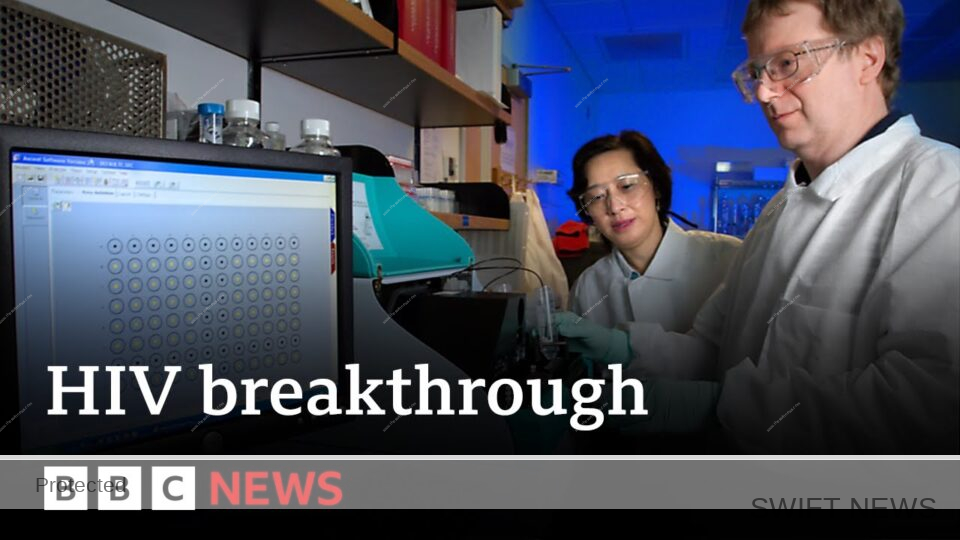
By Our Reporter
For decades, an HIV diagnosis meant a lifetime tethered to daily pills. Antiretroviral medications revolutionized treatment—keeping the virus suppressed—but they never offered a cure. That could be about to change. In a landmark breakthrough, scientists have used the gene-editing tool CRISPR to completely remove an HIV-like virus from infected cells in monkeys—raising the most serious hope yet for a one-time cure.
This isn’t just another medical milestone. This could rewrite the future of HIV treatment.
From Control to Cure
The cutting-edge therapy, known as EBT-101, was developed by researchers at Temple University after more than a decade of relentless effort. Unlike traditional HIV drugs that suppress the virus, this new approach targets HIV where it hides—within the very DNA of infected cells—and cuts it out.
Think of today’s treatment like mopping up a leak: you keep the mess under control, but the source remains. EBT-101 offers a fix for the leak itself.
Why HIV Is So Hard to Kill
HIV is a master of disguise. Once it infects a person, it burrows into the DNA of immune cells, establishing hidden strongholds called viral reservoirs in places like the brain, lymph nodes, and gut. These reservoirs are invisible to current treatments—and to the immune system.
Antiretrovirals stop the virus from replicating but can’t touch these sleeper cells. If treatment stops, the virus rebounds in weeks. That’s why HIV remains a lifelong condition—until now.
Gene Editing: A Game-Changer
CRISPR-Cas9 acts like microscopic scissors. Scientists can program it to seek and destroy specific bits of viral DNA buried in human cells. EBT-101 takes it a step further: using dual guide RNAs, it targets three different parts of the HIV genome, ensuring a more thorough and irreversible attack.
To deliver this precision tool across the body, scientists package it in a harmless virus called AAV9. This clever carrier travels through the bloodstream and delivers the CRISPR payload to the tissues where HIV hides.
And here’s the kicker: the entire treatment is a single intravenous injection.
The Road to the Breakthrough
The journey began in 2014, when Temple University researchers first showed they could delete HIV genes in lab-grown cells. Encouraged, they moved to “humanized” mice with human immune systems—success. But the real test came with rhesus macaques infected with SIV, the monkey version of HIV.
In their most recent study, scientists tested the therapy—renamed EBT-001 for the animal trial—on 12 monkeys. All had been given standard antiretroviral therapy to suppress the virus. Then they received a single injection of CRISPR gene editing.
The result? HIV-like virus was eliminated from all major reservoir tissues, including the lymph nodes, spleen, and brain. And it wasn’t just effective—it was safe.
Safe, Effective, and Transformational
The CRISPR-treated monkeys didn’t just survive—they thrived. Some even gained weight and showed signs of improved immune function. There were no signs of dangerous side effects, and detailed genetic analysis revealed no off-target edits—a major concern with gene-editing tools.
“There were no unintended genetic cuts. No lasting harm,” said Dr. Tricia Burdo, who led the animal study. The only blip? A temporary rise in liver enzymes in some high-dose monkeys, which soon returned to normal.
From Lab to Human Trials
In July 2022, the therapy crossed the ultimate threshold: it was given to a human patient in a clinical trial. Volunteers continue to take their normal HIV meds while receiving the CRISPR injection. If early safety results hold, they’ll soon face the final test—stopping their meds to see if the virus stays gone.
This process, called analytical treatment interruption, is the gold standard in HIV cure research. If patients don’t relapse after halting therapy, it could mean HIV is truly gone.
Why This Matters
If EBT-101 succeeds, it could shatter the current HIV treatment model. No more daily meds. No more lifelong monitoring. Just a single treatment with the potential to cure.
The ripple effects would be immense. For the 38 million people living with HIV worldwide—many of whom struggle with access to consistent care—this would be life-changing. For health systems and governments, it could slash long-term costs and refocus public health strategies on eradication rather than management.
Not “If,” But “When”
Challenges remain. Human trials must prove long-term safety and efficacy. Regulatory approvals, mass production, and global access are still ahead. But for the first time, scientists aren’t asking if a cure is possible.
They’re asking when.
After four decades of heartbreak, this breakthrough offers more than progress. It offers hope—real, tangible hope—that HIV can not only be controlled, but erased.

